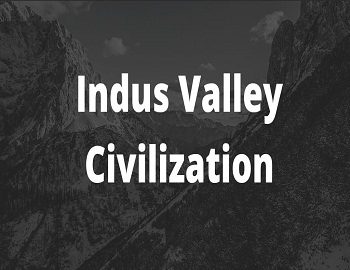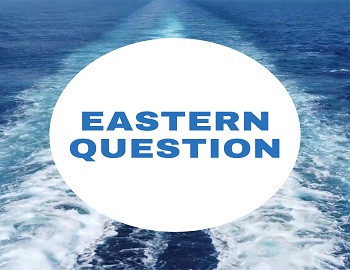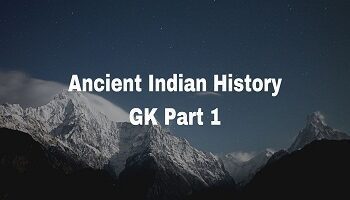Table of Contents
Indus Valley Civilization Important Facts:
Earliest Civilizations of the World:
- Around 3500 B.C., the first cities developed in Mesopotamia– located in the river valley of the Tigris and the Euphrates.
- Followed by Egyptian Civilizations in the Nile River Valley beginning around 3400 B.C.
- The Indus Valley Civilization (flourished between 2500-1500 B.C. with its peak period ranging between 2250-1750 B.C.).
- The Chinese Civilization in the Huang Ho or Yellow River Valley, beginning around 1583 B.C.
Geographical Extent:
- Manda in J&K in the North.
- Daimabad in Maharashtra in the South.
- Sutkagendor on the Makran Coast of Pakistan in the West.
- Alamgirpur (U.P.) in the Upper Ganga-Yamuna Doab in the East.
Important Sites of Indus Valley Civilization:
1:- Harappa (Montgomary district in Punjab- Pakistan):
- First Indus site to be discovered and excavated in 1921 by Daya Ram Sahni.
- River Associated- Ravi/ Parushni/ Yavyavati.
- Important finds–
- Coffin Burial.
- Six Granaries in a row.
- Working platforms made of bricks.
- Workmen’s quarters.
- Stone Sculptures like Male torso of red sandstone, Male dancing figure of grey stone.
2:- Mohenjodaro (Larkhana district of Sind- Pakistan):
- Literally “the mound of the dead“.
- Largest of all Indus cities.
- River Associated- Sindhu/ Indus.
- Excavated by R.D.Banerjee (1922).
- Important finds–
- Great Bath or Big Public Bath.
- Great Granary- Largest building.
- Bronze Dancing Girl Statue.
- Pipal tree Seal.
- Representations of ships, boats, Pashupati, Mother Goddess, and other animals on seals.
- Fragments of woven cloth.
- Evidence of horse from superficial levels.
3:- Lothal ( Manchester of Indus Valley Civilization):
- Dholka taluka of Gujarat, near the Gulf of Cambay.
- River Associated- Bhogava.
- Excavated by S.R.Rao (1954-62).
- Important finds–
- Artificial brick dockyard.
- Persian gulf seal, Button seal.
- Fire altar.
- Metric Scale.
- Double burial.
- Head Surgery.
- Has the evidence for the earliest cultivation of rice-1800 B.C.
- A doubtful terracotta figurine of a horse.
- Impressions of cloth on some sealings.
4:- Kalibangan (Rajasthan):
- Literally means “Black Bangles”.
- Excavated by B.B.Lal (1959).
- On the bank of river Ghaggar.
- Important finds–
- Fire Altars.
- Furrowed Field (a field which has plough marks).
- Bones of Camel.
- Cylindrical Seal.
- Head Surgery.
- Evidence for the presence of Early and Mature Harappan phases.
- Provides the evidence of the earliest earthquake.
5:- Banawali:
- On the ancient bed of Saraswati river in Haryana.
- Excavated by R.S.Bisht (1974).
- The only city with a radial street.
- Fire Altars.
- Clay model of a plough.
6:- Other Sites:
- A few bones of horse and terracotta figure of a horse like animal unearthed from Surkotada (Gujarat).
- Dholavira (Gujarat) – Largest signboard inscription.
- IVC is Urban Civilization.
- Material Culture- Bronze.
- First urbanization is related to Bronze technology.
- The Harappan pottery called black or red pottery.
Indus Valley Civilization- Town Planning:
- It was planned on the lines of the grid system i.e. streets and lanes cutting across one another almost at right angles.
- The main road ran North to South and the by-lanes ran West to East, intersecting the main streets.
- Division of town into two parts–
- Upper town (citadel area)- Big public character.
- Lower town- Small dwelling houses.
- Dholavira is the only exception which is divided into three parts- upper town, middle town, and lower town.
- The area demarcated – Rectangular or Parallelogram.
- Nowhere was a building allowed to encroach on a public highway as in Sumer.
- Lamp posts at intervals indicate the existence of street lighting.
- Elaborate Drainage System.
- Generally in building wells, pavements, bathrooms, drains, etc. burnt brick was lavishly used.
- Sun-dried brick was used only for foundation, packing of terraces, etc.
- Brick Kilns have been found from Mohenjodaro.
- The method of joining is the English Bond Method.
Indus Valley Civilization- Weights:
- Decimal system and Binary system.
- Multiples of 2 and multiples of 16.
- A number of small cubes made of Chert.
Indus Valley Civilization- Seals:
- Material – Steatite.
- Shape – Rectangular, Square.
- The Standard Harappan Seal was a square or oblong plaque.
Indus Valley Civilization- Script:
- Still undeciphered.
- Pictographic in nature.
- Writing method- Boustophedron.
Indus Valley Civilization- Religion:
- Chief Male deity was Pasupati Mahadeva (proto-siva), who is represented on seals surrounded by four animals- elephant, tiger, rhino, and buffalo, each facing a different direction.
- Chief Female deity was Mother Goddess represented in terracotta figurines.
- Phallus (Lingam) and Yoni worship were prevalent.
- Trees (pepal), animals (bull), birds (dove, pigeon), and stones were worshipped. Unicorns or Ekasringa were also worshipped.
- No temple has been found though idolatry was practiced.
- People probably believed in ghosts and spirits as amulets were worn.
The decline of Indus Valley Civilization:
- Mortimer Wheeler- Aryan invasion.
- E.J.H.Mackay, Lambrick & Sir John Marshal- Floods in river Indus.
- B.K.Thapar- Environmental & Climatic factors.
- Rafique Mughal- Drying up of River Ghaggar-Hakra system.
- W.A.Fairservice- Deforestation and soil salinity.
- Robert Sharer- Shifts in ancient trade routes.
| Harappan Site | Modern Name |
|---|---|
| Dholavira | Kadir Island |
| Rakhigarhi | Hisar |
| Bhirrana | Haryana |
| Bhogavo | Saurashtra |









Comments (No)